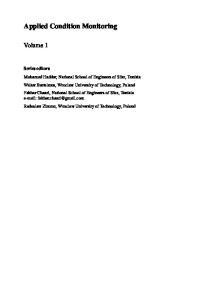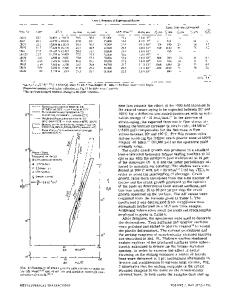On the mechanism of fatigue crack growth in silicon nitride
- PDF / 1,500,819 Bytes
- 10 Pages / 597 x 774 pts Page_size
- 24 Downloads / 386 Views
I.
INTRODUCTION
S I N C E ceramic materials lack the ability to deform plastically, a question is raised concerning the mechanism of fatigue crack growth in brittle materials, such as silicon nitride, for which fatigue crack growth data have been obtained, t~-l~ Certainly, it appears that the mechanism must be different than in metals, where plastic deformation is known to play an essential role by permitting the blunting of the crack tip during the rising part of a loading cycle, which serves to advance as well as to stabilize the crack, and by allowing resharpening of the crack tip to occur during the unloading portion of the cycle. Once a fatigue crack starts to advance in a brittle material, why does it not simply propagate in a catastrophic manner? One possibility is that for ceramics, the environment exerts a controlling influence, in that it lowers the fracture resistance of the material at the crack tip to allow subcritical crack growth. In such a case, cyclic crack growth might be related to the phenomenon known as static fatigue, which involves subcritical crack growth under steady loading, t~'21 However, this suggests that in the absence of environmental effects, crack growth should not occur under cyclic conditions, but as the results to be presented show, crack growth can occur in silicon nitride even in vacuum under cyclic conditions, so that one is still left with a question concerning the mechanism of subcritical crack advance in this brittle material. In the absence of an environmentally dominated effect, clearly, some other mechanism must be operative, and such a mechanism is proposed and evaluated in the following. This mechanism is based upon the idea that the advance per cycle is due to a wedging or closure effect
M. OKAZAKI, Visiting Associate Professor, Metallurgy Department, University of Connecticut, is permanently affiliated with Nagaoka University of Technology, Nagaoka 940-21, Japan. A.J. McEVILY, Professor, is with the Metallurgy Department, University of Connecticut, Storrs, CT 06268. T. TANAKA, Professor, is with Ritsumeikan University, Kyoto 603, Japan. Manuscript submitted August 1, 1990. METALLURGICALTRANSACTIONSA
created by debris and fracture surface roughness. During the unloading portion of the cycle, the wedging action results in localized tensile and shear stresses along the crack front, which are sufficiently high to advance the crack through the creation of microcracks, but in a steep negative stress intensity gradient, which leads to the arrest of the crack in each cycle. II.
EXPERIMENTAL PROCEDURES
The experimental results to be discussed are from two sources. Fatigue crack growth data for silicon nitfide specimens tested in air at room temperature were obtained at Ritsumeikan University by Tanaka et al. [51 Additional data obtained with specimens prepared at Ritsumeikan University and tested in vacuum at the University of Connecticut are reported on herein. In both cases, the specimen configuration and manner of testing were identical. A. Materials and Specimens
A
Data Loading...










